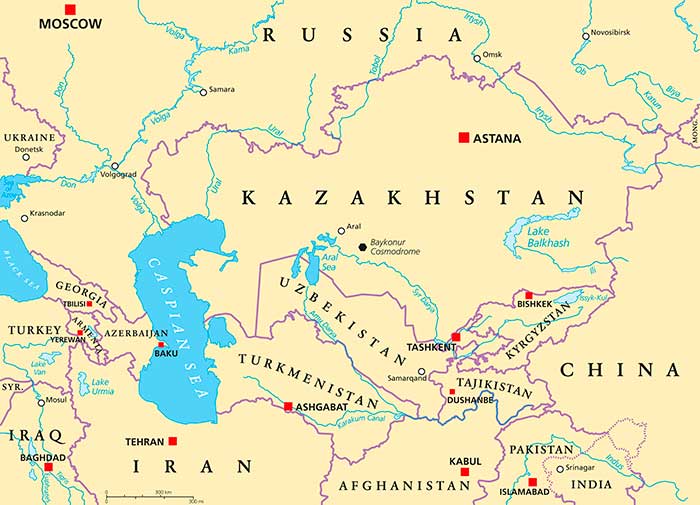China’s Economic & Trade Cooperation With Central Asia
China’s economic and trade cooperation with the five Central Asian former Soviet states has achieved tangible results since diplomatic relations were established more than 30 years ago, China’s Ministry of Commerce has said, ahead of the China-Central Asian Summit which began yesterday (May 18). China’s trade with the five Central Asian countries – Kazakhstan, Kyrgyzstan, Tajikistan, Turkmenistan and Uzbekistan – increased to US$70.2 billion in 2022 from US$0.46 billion in 1992, when China established diplomatic ties with the five Central Asian countries.
China is the largest trading partner of Kyrgyzstan, Turkmenistan and Uzbekistan, and the second largest trading partner of Kazakhstan, as well as the third largest trading partner of Tajikistan, according to the Ministry.
Bilateral trade volume has seen a 40% growth in 2022 over 2021, and recorded a year-on-year expansion of 22% in Q1 of this year.
The trade structure has also improved over the years. Last year, China’s imports of agricultural, energy and mineral products from the five countries jumped over 50% from a year earlier, while exports of mechanical and electronic products to them increased by 42%.
Investment cooperation has also benefited all sides. As of the end of March 2023, China’s direct investment stock in the five Central Asian countries stood at slightly over US$15 billion. The cumulative turnover of completed projects reached US$63.9 billion.
A batch of cooperation projects have been launched in the fields of infrastructure, oil and gas exploration, manufacturing, medical and health care, education, technology, and the digital economy.

China and all the five central Asian countries have signed cooperation documents on the joint construction of the Belt and Road Initiative. There are some landmark projects, such as the Horgos International Border Cooperation Center and China-Central Asia gas pipeline.
The Horgos International Border Cooperation Center is the first trans-border international free trade zone in the world and China’s first special economic zone being “within the country, but out of the jurisdiction of its customs.”
Running through Turkmenistan, Uzbekistan and Kazakhstan, the China-Central Asia gas pipeline is China’s first transnational gas pipeline. By the end of 2022, the pipeline had delivered a total of 423.2 billion cubic meters of natural gas to China since it began operation in 2009.
The pipeline has effectively promoted the social and economic development of countries along the route, and played an important role in the diversification of China’s energy imports and the improvement of domestic energy consumption structure.
The assembly center of China-Europe Railway Express in Xian has 17 mainlines from the city to Central Asia countries, which has become the golden channel for two-way logistics in China and Central Asia.
China Briefing’s overview and analysis of the on-going China-Central Asian Summit can be read here.
Source: CGTN
Related Reading





